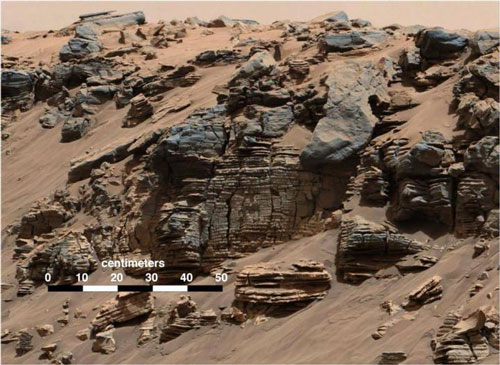 Researchers have long known that there is water in the form of ice on Mars. Now, new research from NASA's Mars rover Curiosity shows that it is possible that there is liquid water close to the surface of Mars. The explanation is that the substance perchlorate has been found in the soil, which lowers the freezing point so the water does not freeze into ice, but is liquid and present in very salty salt water - a brine.
Researchers have long known that there is water in the form of ice on Mars. Now, new research from NASA's Mars rover Curiosity shows that it is possible that there is liquid water close to the surface of Mars. The explanation is that the substance perchlorate has been found in the soil, which lowers the freezing point so the water does not freeze into ice, but is liquid and present in very salty salt water - a brine.
Apr 13th, 2015
Read more
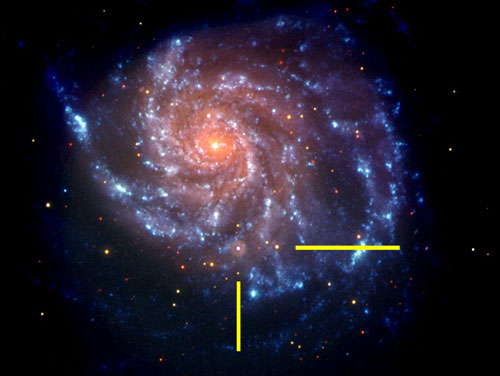 A team of astronomers found that the type of supernovae commonly used to measure distances in the universe fall into distinct populations not recognized before; the findings have implications for our understanding of how fast the universe has been.
A team of astronomers found that the type of supernovae commonly used to measure distances in the universe fall into distinct populations not recognized before; the findings have implications for our understanding of how fast the universe has been.
Apr 12th, 2015
Read more
As part of the PlanetS National Centre of Competence in Research (NCCR), astronomers have come to measure the temperature of the atmosphere of an exoplanet with unequalled precision, by crossing two approaches.
Apr 10th, 2015
Read more
Finding sets the stage for discoveries from the next generation of neutrino telescopes.
Apr 10th, 2015
Read more
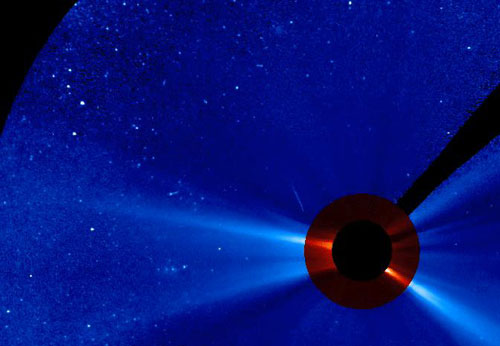 While no one yet knows what's needed to build a habitable planet, it's clear that the interplay between the sun and Earth is crucial for making our planet livable - a balance between a sun that provides energy and a planet that can protect itself from the harshest solar emissions.
While no one yet knows what's needed to build a habitable planet, it's clear that the interplay between the sun and Earth is crucial for making our planet livable - a balance between a sun that provides energy and a planet that can protect itself from the harshest solar emissions.
Apr 10th, 2015
Read more
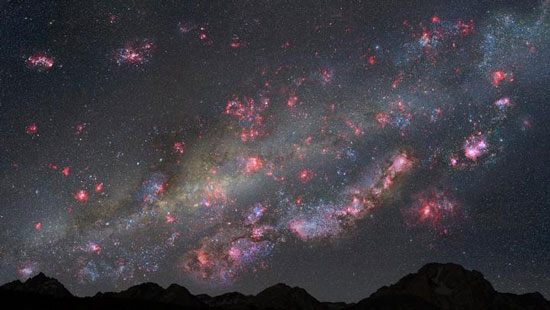 In one of the most comprehensive multi-observatory galaxy surveys yet, astronomers find that galaxies like our Milky Way underwent a stellar 'baby boom', churning out stars at a prodigious rate, about 30 times faster than today.
In one of the most comprehensive multi-observatory galaxy surveys yet, astronomers find that galaxies like our Milky Way underwent a stellar 'baby boom', churning out stars at a prodigious rate, about 30 times faster than today.
Apr 10th, 2015
Read more
When black holes tango, one massive partner spins head over heels (or in this case heels over head) until the merger is complete, said researchers.
Apr 9th, 2015
Read more
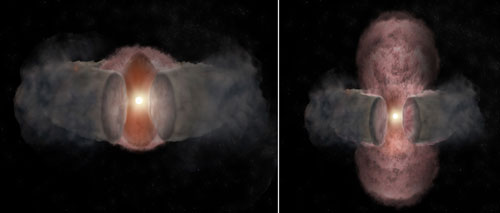 Astronomers are getting a unique, real-time look as a massive young star develops, with the promise of greatly improved understanding of the process.
Astronomers are getting a unique, real-time look as a massive young star develops, with the promise of greatly improved understanding of the process.
Apr 2nd, 2015
Read more
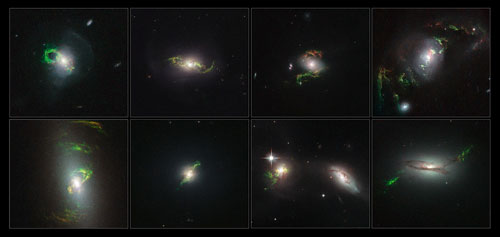 The Hubble Space Telescope has imaged a set of enigmatic quasar ghosts - ethereal green objects which mark the graves of these objects that flickered to life and then faded. The eight unusual looped structures orbit their host galaxies and glow in a bright and eerie goblin-green hue. They offer new insights into the turbulent pasts of these galaxies.
The Hubble Space Telescope has imaged a set of enigmatic quasar ghosts - ethereal green objects which mark the graves of these objects that flickered to life and then faded. The eight unusual looped structures orbit their host galaxies and glow in a bright and eerie goblin-green hue. They offer new insights into the turbulent pasts of these galaxies.
Apr 2nd, 2015
Read more
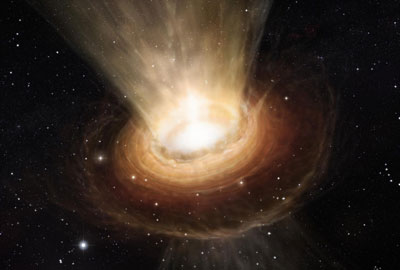 Some physicists have argued that black holes are the ultimate vault, sucking in information and then evaporating without leaving behind any clue as to what they once contained. A new study shows this perspective may be wrong. The research finds that information is not lost once it has entered a black hole, and presents explicit calculations showing how information is, in fact, preserved.
Some physicists have argued that black holes are the ultimate vault, sucking in information and then evaporating without leaving behind any clue as to what they once contained. A new study shows this perspective may be wrong. The research finds that information is not lost once it has entered a black hole, and presents explicit calculations showing how information is, in fact, preserved.
Apr 2nd, 2015
Read more
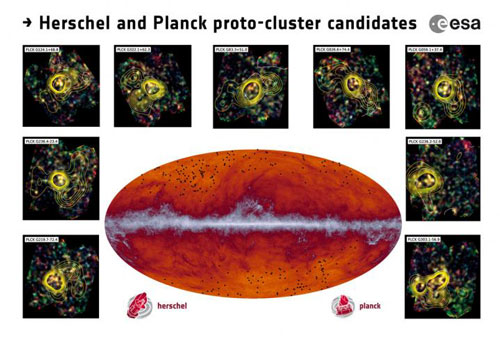 Observations made with two space observatories, Herschel and Planck, reveal glimpses into how today's galaxies came to be.
Observations made with two space observatories, Herschel and Planck, reveal glimpses into how today's galaxies came to be.
Mar 31st, 2015
Read more
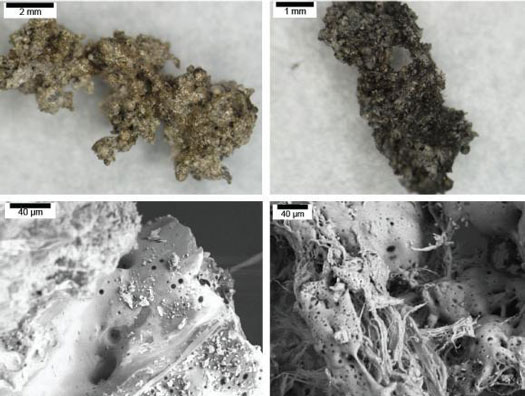 A team of scientists has a new explanation for the planet Mercury's dark, barely reflective surface. They suggest that a steady dusting of carbon from passing comets has slowly painted Mercury black over billions of years.
A team of scientists has a new explanation for the planet Mercury's dark, barely reflective surface. They suggest that a steady dusting of carbon from passing comets has slowly painted Mercury black over billions of years.
Mar 30th, 2015
Read more
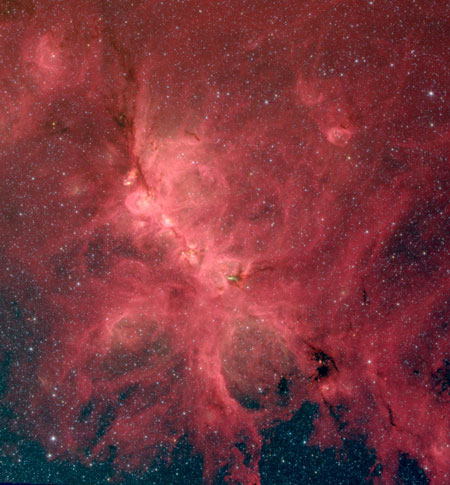 Stars form when gravity pulls together material within giant clouds of gas and dust. But gravity isn't the only force at work. Both turbulence and magnetic fields battle gravity, either by stirring things up or by channeling and restricting gas flows, respectively. New research focusing on magnetic fields shows that they influence star formation on a variety of scales, from hundreds of light-years down to a fraction of a light-year.
Stars form when gravity pulls together material within giant clouds of gas and dust. But gravity isn't the only force at work. Both turbulence and magnetic fields battle gravity, either by stirring things up or by channeling and restricting gas flows, respectively. New research focusing on magnetic fields shows that they influence star formation on a variety of scales, from hundreds of light-years down to a fraction of a light-year.
Mar 30th, 2015
Read more
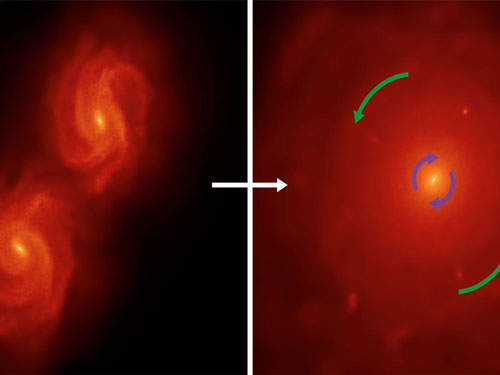 A new mechanism explains the strange orbit of suns in elliptical galactic systems.
A new mechanism explains the strange orbit of suns in elliptical galactic systems.
Mar 27th, 2015
Read more
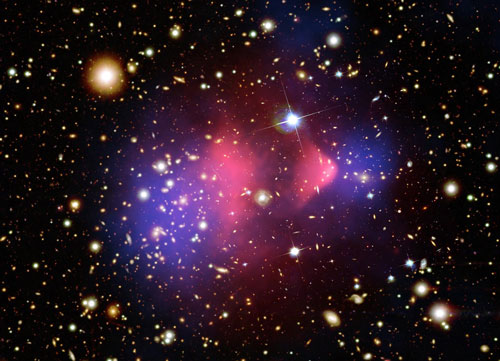 When galaxy clusters collide, their dark matters pass through each other, with very little interaction. Deepening the mystery, a study by scientists at EPFL and the University of Edinburgh challenges the idea that dark matter is composed of particles.
When galaxy clusters collide, their dark matters pass through each other, with very little interaction. Deepening the mystery, a study by scientists at EPFL and the University of Edinburgh challenges the idea that dark matter is composed of particles.
Mar 27th, 2015
Read more
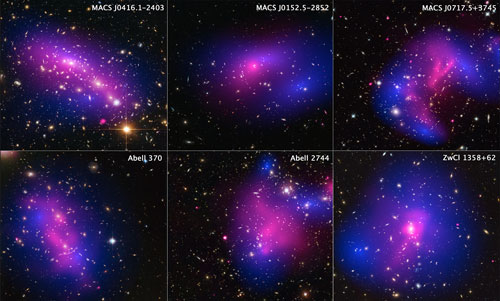 Astronomers using observations from NASA's Hubble Space Telescope and Chandra X-ray Observatory have found that dark matter does not slow down when colliding with each other. This means that it interacts with itself even less than previously thought. Researchers say this finding narrows down the options for what this mysterious substance might be.
Astronomers using observations from NASA's Hubble Space Telescope and Chandra X-ray Observatory have found that dark matter does not slow down when colliding with each other. This means that it interacts with itself even less than previously thought. Researchers say this finding narrows down the options for what this mysterious substance might be.
Mar 26th, 2015
Read more
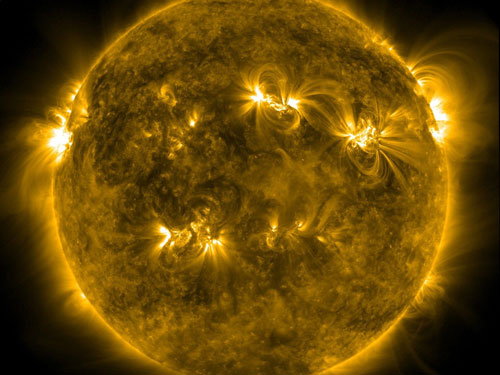 Max Planck researchers discover how the strength of a forthcoming activity cycle can be predicted.
Max Planck researchers discover how the strength of a forthcoming activity cycle can be predicted.
Mar 26th, 2015
Read more
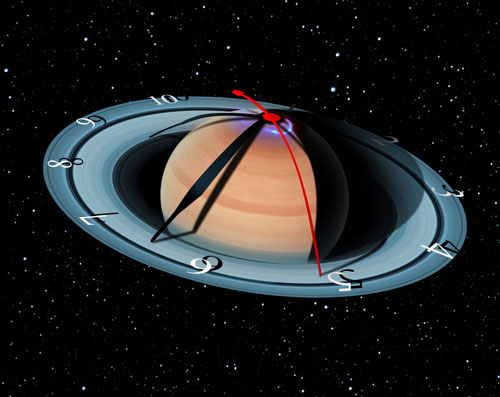 If you could jump a spaceship out past Mars and Jupiter to Saturn, pass by its rings and somehow park on the planet's gaseous surface, how long would your day be there? This question, surprisingly, has not been precisely answered until now.
If you could jump a spaceship out past Mars and Jupiter to Saturn, pass by its rings and somehow park on the planet's gaseous surface, how long would your day be there? This question, surprisingly, has not been precisely answered until now.
Mar 26th, 2015
Read more
 Researchers have long known that there is water in the form of ice on Mars. Now, new research from NASA's Mars rover Curiosity shows that it is possible that there is liquid water close to the surface of Mars. The explanation is that the substance perchlorate has been found in the soil, which lowers the freezing point so the water does not freeze into ice, but is liquid and present in very salty salt water - a brine.
Researchers have long known that there is water in the form of ice on Mars. Now, new research from NASA's Mars rover Curiosity shows that it is possible that there is liquid water close to the surface of Mars. The explanation is that the substance perchlorate has been found in the soil, which lowers the freezing point so the water does not freeze into ice, but is liquid and present in very salty salt water - a brine.
 Subscribe to our Space Exploration News feed
Subscribe to our Space Exploration News feed












